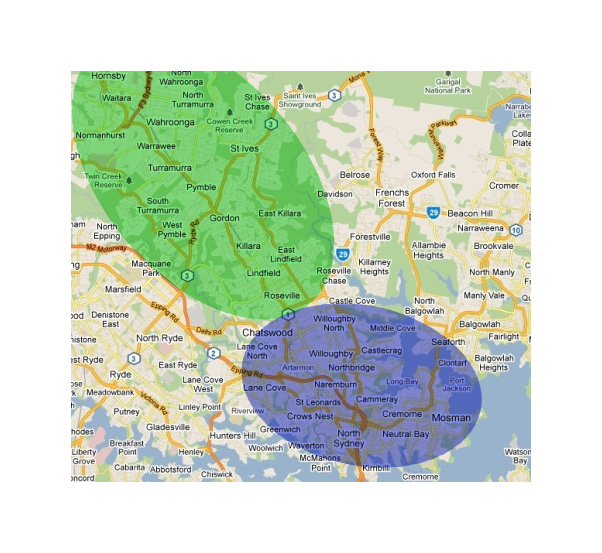Mayors within the lower north shore region have spoken out against the prospect of council amalgamation proposed by the Independent Local Government Review Panel.
Councils along the upper and lower north shore would be encouraged to merge into two “super councils” if the recommendations of the panel’s Future Directions report are implemented.
Mayor of Lane Cove Council, Scott Bennison, said while he supports the report’s objective to make local government more efficient, he does not feel council amalgamation is the answer.
“We believe that by merging we’ll lose the local aspect to the community and residents will lose out; bigger is not better,” said Cr Bennison.
Under the panel’s recommendations, North Sydney, Willoughby, Hunters Hill, Lane Cove and Mosman Councils would be encouraged to merge, bringing the population of their Local Government Area to 211, 961.
Hornsby and Ku-ring-gai Councils would also be urged to amalgamate into one larger council covering the entire upper north shore, with a population of 278, 176. The two new councils would then be part of the 15 “super councils” making up the Sydney metropolitan area.
Mayors within the lower north shore region disagreed with the suggestion to amalgamate due to their concern that it would result in the loss of community voice.
Many of the mayors also disagreed with some of the financial analysis on which the Future Directions paper was based.
According to the report, a motivating factor behind developing “super councils” is to curb financial deficits.
The report states: “Mergers should be pursued where they can make a substantial contribution to addressing financial problems, reducing fragmentation of resources and duplication of effort, and building strategic capacity for the long term.”
Currently only one third of councils across NSW are operating within a surplus. However councils within the lower north shore all expressed they were in sound financial positions.
The Future Directions report used previous financial analysis from TCorp to make its suggestions. Under this analysis every council’s current financial capacity and long-term sustainability were assessed.
Along the upper and lower north shore, the only council categorised as “weak” was Mosman Council.
However, Mayor of Mosman, Peter Abelson, disagreed with this classification. He said although Mosman Council is running a small deficit at the moment, it has assets of $425 million and income earning property of over $40 million.
“The idea that we can’t pay our bills now or in the future is ridiculous,” said Cr Abelson.
While this group of councillors were all firmly against merging governance, they supported introducing initiatives that would make their councils more efficient.
“We can achieve the things the report is recommending that councils do, such as not duplicating services individually in each council, by working cooperatively with other councils. You don’t have to merge a council’s governance to do that, you can do it in marriages, if you like, between other councils,” said Mayor of Hunters Hill, Richard Quinn.
Along the upper north shore a consensus among the councils in question has not been reached. Ku-ring-gai Council are yet to make their position clear on the prospect of merging with Hornsby Shire Council. It plans to consult with an independent body and the community before making its position known.
However, Mayor of Ku-ring-gai, Elaine Malicki said she is aware that Ku-ring-gai is a very different area to Hornsby.
“Hornsby is partly rural with economic hubs, whereas we [Ku-ring-gai] are very much town centre based,” said Cr Malicki.
Currently only one Mayor in the northern Sydney region has spoken out in favour of council amalgamation – the Mayor of Hornsby Shire Council, Steve Russell. Cr Russell is for amalgamation with Ku-ring-gai and has suggested extending this merger to the Hills Shire Council as well.
“I think we should investigate the concept thoroughly as I believe we have a responsibility to always investigate ways to save rate payers money,” said Cr Russell, who advocates for the economic advantages council mergers would bring.
The Future Directions paper is the third paper in a four-step review of local government. The Independent Local Review Panel is currently working on the final recommendation paper to present to the state government in September.
If the state government chooses to take the panel’s suggestions on board in relation to amalgamation, it will not be able to instigate mandatory council mergers. The Local Government Act specifies that a merger cannot occur without extensive community consultation.












